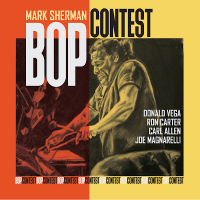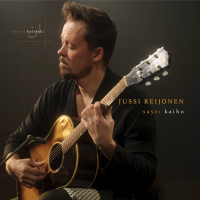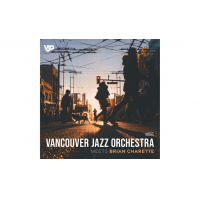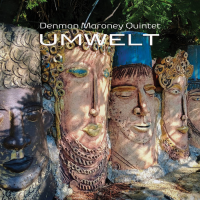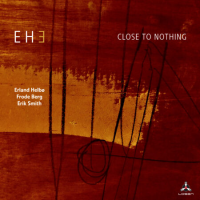Home » Jazz Articles » Multiple Reviews » Brian Eno: The Soundtracks Reissues
Brian Eno: The Soundtracks Reissues
Like the 'Ambient Works' series, where Astralwerks and Virgin recently reissued Eno's seminal Ambient recordings in beautifully remastered form, the new Soundtracks Reissues group together four releases...containing music that was used for real films, or conceived for imaginary ones.
 While ex-Roxy Music keyboardist Brian Eno was establishing a distinctive and new style of music that he called Ambient Music—which investigated the potential of making music as an integral part of the listenerâïïs aural landscape—he was also finding ways to mold the concept, albeit in sometimes a more direct way, to integrate it with other media including film. Like the Ambient Works series, where Astralwerks and Virgin recently reissued Enoâïïs seminal Ambient recordings in beautifully remastered form, the new Soundtracks Reissues group together four releases by Eno, containing music that was used for real films, or conceived for imaginary ones.
While ex-Roxy Music keyboardist Brian Eno was establishing a distinctive and new style of music that he called Ambient Music—which investigated the potential of making music as an integral part of the listenerâïïs aural landscape—he was also finding ways to mold the concept, albeit in sometimes a more direct way, to integrate it with other media including film. Like the Ambient Works series, where Astralwerks and Virgin recently reissued Enoâïïs seminal Ambient recordings in beautifully remastered form, the new Soundtracks Reissues group together four releases by Eno, containing music that was used for real films, or conceived for imaginary ones. That these four albums—Music for Films, Apollo: Atmospheres and Soundtracks, Thursday Afternoon and More Music for Films—should take their cues from visual inspiration rather than the more specific aural purpose of Ambient Music, results in their fitting comfortably within Enoâïïs body of instrumental work while, at the same time, having a complexion all their own.
While some of the pieces are distinctly Ambient in nature, others are more intrusive. Some even have touches of song form, with chord changes and rhythms, albeit soft, that are rarely to be found in the more static environment of Ambient Music. And yet, for the most part, the music found on the Soundtracks Reissues is, like the Ambient Works, something that can be placed into the background or, when placed more in the foreground, demand the listenerâïïs attention.
Like the Ambient Works series, the four discs that comprise the Soundtracks Reissues have been digitally transferred from the original master tapes by Simon Heyworth, using a technique that results in the closest thing to experiencing what Eno would have heard in the recording studio. The level of detail revealed makes it well worth the investment to replace earlier, less accurate, CD issues of these important recordings; not to mention More Music for Films placing a variety of pieces, previously only available on limited-edition vinyl, on CD for the first time.
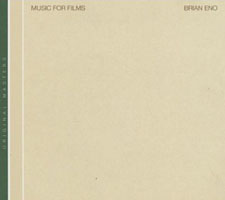 Brian Eno
Brian EnoMusic for Films
Virgin/Astralwerks 7243 5 63646 2 2
1978; Reissued 2005
Originally released as a limited-edition (500 copies) LP in 1976, that was sent to filmmakers for possible inclusion in their work, the commercial Music for Films release was expanded to include a number of pieces for, as Eno put it, âïïpossible use as soundtracks to âïïimaginaryâïï films." Unlike the more extended pieces found in Enoâïïs Ambient series this release consisted of brief miniatures—some as short as one minute, with the longest piece clocking in at a mere four minutes.
Unlike Enoâïïs Ambient works, Music for Films utilizes a broader instrumental palette, with Enoâïïs synthesizers and found sounds being supplemented by contributions from guitarists Paul Rudolph, Fred Frith and Robert Fripp; bassists Percy Jones and Bill MacCormick; percussionists Phil Collins (yes, that Phil Collins) and Dave Mattacks; violist John Cale, pianist Rod Melvin and trumpeter Rhett Davies. The results are largely more intrusively intriguing than Discreet Music, which was released only a year before the limited-edition LP.
Revolving around relatively simple thematic and/or rhythmic concepts, this is compelling music. What is remarkable about these short pieces is how, in the space of a very brief time, they draw the listener in, deceiving one into thinking that they are longer than their few short minutes. Thereâïïs little preamble; pieces often fade up from nowhere, and fade back to nothingness. And yet they manage to immediately evoke strong images.
While there is, no doubt, a clear sense of purpose with each of the pieces, there is also the impression that improvisation was a part of the process, albeit in a controlled and clearly-defined way. Jonesâïï bass on the tranquil âïïAragon,âïï and Enoâïïs own acoustic guitar on the equally peaceful âïïFrom the Same Hillâïï have a sense of composition, but also a certain immediacy that would imply these were not prior conceptions.
Elsewhere, things become darker. The three consecutive versions of âïïSparrowfallâïï build from an air of melancholy to something more powerful, showing how, in terms of film scores, a simple theme can be interpreted different ways to evoke a variety of emotions.
As short as the compositions are, and as much territory as they cover—from the stark beauty of âïïSlow Waterâïï to the more insistent drama of âïïPatrolling Wire Borders—Enoâïïs ability, as producer, to place these 18 miniatures in a sequence that gives the album its own narrative sense, makes Music for Films more than merely a series of vignettes. It tells its own story, one that will most certainly vary from listener to listener.
 Brian Eno
Brian EnoApollo: Atmospheres and Soundtracks
Virgin/Astralwerks 7243 5 63647 2 1
1983; Reissued 2005
Unlike Music for Films, the music for Apollo: Atmospheres and Soundtracks was entirely written for a specific film project—a documentary about the NASA Apollo lunar missions, by director Al Reinert. Additionally, by this time, Eno had found a sympathetic partner in Canadian Daniel Lanois, having already worked with Lanois on the âïï80 collaboration with Harold Budd, Ambient 2: The Plateaux of Mirror and the âïï82 release, Ambient 4: On Land. Lanois would bring an equally vivid imagination, and a more melodic bent that would be matched by Enoâïïs brother Roger, who also collaborated on the release. However, while Lanoisâïï foundations were in roots music, Roger Enoâïïs were more representative of a European upbringing in classical music.
The first half of the album, the âïïAtmospheres,âïï is more ambient in nature, evoking images of the vast reaches of space and an aural impression of weightlessness. Even âïïAn Ending (Ascent),âïï which is the first piece on the disc to actually use simple chord changes and a transcendent melody, remains within the Ambient mold. That this piece would later show up in Danny Boyleâïïs film 28 Days Later to complement the images of an empty London, apparently devoid of life, is almost paradoxical, given its sublime beauty.
By the time it reaches Lanoisâïï âïïSilver Morningâïï which, with its layers of heavily-treated guitar, may be sharper than anything that precedes it, the music suggests something more grounded—clearly the âïïSoundtrackâïï portion of the work. Thereâïïs more rhythm, more changes—the pieces are as close to real âïïsongsâïï as anything Eno has done within the broader purview of Ambient music. âïïDeep Blue Dayâïï may have rich washes of sound, but Lanoisâïï guitars and the rhythmical pulse of the bass gives the piece an almost countrified texture. âïïAlways Returningâïï takes a spare three-note theme and, by constantly altering the chord pattern underneath, creates something more poignant, more lyrical.
Eno points out, in the liner notes, that his intention in creating the soundtrack music for the film was to avoid the more melodramatic and up-tempo way in which the original broadcasts of lunar landings were presented. Apollo: Atmospheres and Soundtracks suggests that the collective zeitgeist, arising from the first lunar landings, might have been another thing entirely had it been treated with the more humbling view of the how the achievement truly expanded the boundaries of human experience in an infinite universe.
 Brian Eno
Brian EnoThursday Afternoon
Virgin/Astralwerks 7243 5 63648 2 0
1985; Reissued 2005
Always one to embrace new technologies as they might be applicable to his musical vision, Eno was one of the first to embrace the nascent technology of the compact disc. And so Eno created one of the earliest pieces to exploit the CDâïïs larger capacity and, therefore, its potential for uninterrupted music of greater lengths; and the possibility for broader dynamics and the use of complete silence.
Taking the concept developed on Discreet Music and Music for Airports a step further, Thursday Afternoon is a 61-minute piece originally conceived for use in a video that presented seven video paintings by Christine Alicino. Challenging the apparent limitation of the video medium, where repeated viewings would dilute its intent and impact, Eno stated in the original liner notes—sadly missing from the reissue—that âïïOur background as television viewers has conditioned us to expect that things on screen change dramatically and in a significant temporal sequence, and has therefore reinforced a rigid relationship between viewer and screen—you sit still and it moves. I am interested in a type of work which does not necessarily suggest this relationship: a more steady-state image-based work which one can look at and walk away from as one would a painting; it sits still and you move.âïï
In other words, perhaps, the philosophy of Ambient music made visual, where the images become a part of the larger visual backdrop, sometimes at the forefront of oneâïïs consciousness, at other times less so.
But without seeing the video, which has long since gone out-of-print, Thursday Afternoon remains the kind of aural experience that, like its visual counterpart, drifts in and out of the listenerâïïs consciousness. Harmonically static, with no rhythm to speak of, it consists of a constant backwash and a number of short themes that, being of inconsistent length and being repeated in a random fashion, come together in a variety of sonic clusters.
Most importantly, however, with the introduction of the compact disc, Eno was able to introduce pure silence into the mix—something that, regardless of how good a vinyl pressing was, was impossible to use fully, as once the volume of the music dropped below a certain level, the sound of the needle on vinyl took over. The new format allowed the use of levels so low as to be almost invisible; but this time not swallowed up by any imperfections of media.
By being a logical advancement of concepts first utilized on Discreet Music and Music for Airports, Thursday Afternoon is, in some ways, less groundbreaking. On the other hand, its embracing of new technology to further a musical concept demonstrates that Eno has always seen such developments as a means to an end, rather than an end in themselves.
 Brian Eno
Brian EnoMore Music for Films
Virgin/Astralwerks 7243 5 63649 2 9
1976/1983; Reissued 2005
Perhaps the gem of the Soundtracks Reissues series is the fourth release, More Music for Films. Culled from tracks on the original Music for Films limited-edition promo that didnâïït make it onto the commercial release, as well as all the tracks featured on the rare âïï83 vinyl release, Music for Films Volume 2—previously only available as part of the box set Working Backwards 1983-1973—More Music for Films fills in the gaps between the initial Music for Films release and the hard-to-find Music for Films III from âïï88.
Like its predecessor, More Music for Films consists of short vignettes—21 in all, over the course of 43 minutes—and some of the pieces are alternate versions or extensions of pieces from the original. âïïFuseli,âïï with John Caleâïïs unusually harsh viola over a dark electric piano pad and bass drum rhythm, is clearly from the same session as âïïPatrolling Wire Bordersâïï; similarly, âïïFrom the Coastâïï is an alternate reading of âïïQuartz.âïï âïïAlways Returning (II),âïï on the other hand, is an even more languid and spacious version of the original that appeared on Apollo: Atmospheres and Soundtracks.
While no musicians are credited on More Music for Films, those familiar with Music for Films will be able to identify some of the same contributors. Bassist Percy Jones, whose distinctive fretless style helped define the fusion band Brand X as well as his more recent group Tunnels, dominates âïïUntitled,âïï âïïThe Last Doorâïï and, most notably the almost funky âïïChemin de Fer.âïï
And while there are some tracks that fit comfortably within the Ambient music universe, others are surprisingly song-oriented. The aptly-titled âïïMelancholy Waltzâïï has a tinge of country, but odd textures flitter in and out, giving it a more disturbing complexion.
Like Music for Films, More Music for Filmsâïï miniatures are remarkable for their ability to instantly evoke images and emotions. More immediately invasive than the other recordings in the Soundtracks Reissues series, More Music for Films demonstrates Enoâïïs broad reach, and a penchant for darker, more noise-laden work that he would explore further on later works like âïï92âïïs The Shutov Assembly.
And so, while the Soundtracks Reissues series is less conceptually-focused than his Ambient Works, they do fit comfortably within his overall artistic oeuvre. Examined in the context of the Ambient Works series, and his more song-based Early Works, these soundtracks for films real and imagined succeed at creating a broader picture of Brian Eno—an artist who has managed to move modern music forward with the same kind of significance as artists like Miles Davis and John Coltrane. While not possessing the same musical technique or advanced harmonic knowledge of either, his mastery of the studio to create groundbreaking advances felt far and wide is no less important.
Music for Films
Track Listing: Aragon; From the Same Hill; Inland Sea; Two Rapid Formations; Slow Water; Sparrowfall (1); Sparrowfall (2); Sparrowfall (3); ALternative 3; Quartz; Events in Dense Fog; "There is Nobody"; Patrolling Wire Borders; A Measured Room; Task Force; M386; Strange Light; Final Sunset
Apollo: Atmospheres and Soundtracks
Track Listing: Under Stars; The Secret Place; Matta; Signals; An Ending (Ascent); Under Stars; Drift; Silver Morning; Deep Blue Day; Weightless; Always Returning; Stars
Thursday Afternoon
Track Listing: Thursday Afternoon
More Music for Films
Track Listing: Untitled; The Last Door; Chemin de Fer; Dark Waters; Fuseli; Melancholy Waltz; Northern Lights; From the Coast; Shell; Empty Landscape; Reactor; The Secret; Don't Look Back; Marseilles; The Dove; Roman Twilight; Dawn, Marshland; Climate Study; Drift Study; Approaching Taidu; Always Returning (II)
Note: There is a defect with the first issues of More Music for Films. Track 18, titled âïïClimate Studyâïï is, in fact, a repeat of track 20, âïïApproaching Taidu.âïï This will be resolved with subsequent releases, but best to check and be aware of this problem.
Related Article: Brian Eno: Ambient Forefather
Tags
PREVIOUS / NEXT
Support All About Jazz
 All About Jazz has been a pillar of jazz since 1995, championing it as an art form and, more importantly, supporting the musicians who make it. Our enduring commitment has made "AAJ" one of the most culturally important websites of its kind, read by hundreds of thousands of fans, musicians and industry figures every month.
All About Jazz has been a pillar of jazz since 1995, championing it as an art form and, more importantly, supporting the musicians who make it. Our enduring commitment has made "AAJ" one of the most culturally important websites of its kind, read by hundreds of thousands of fans, musicians and industry figures every month.








